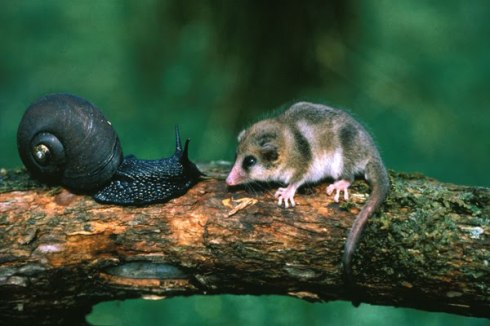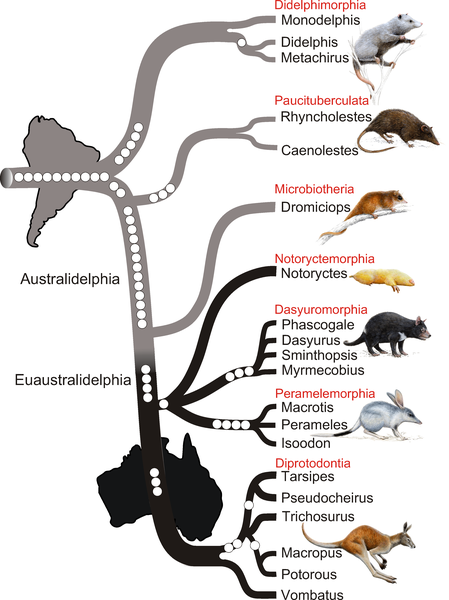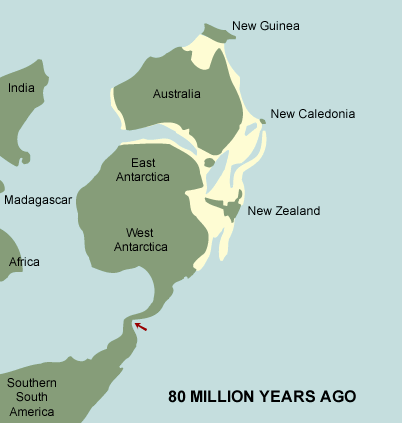Monito del monte (Dromiciops gliroides) is a tiny arboreal marsupial native to the temperate rainforests of Chile and Argentina. The name “Monito del monte” means “little monkey of the mountain” and although the tiny marsupials are not even remotely related to primates, they are clever and deft. During the cold winter months the animals hibernate in little ball-like nests which they build out of waterproof leaves and line with moss. Like the more familiar marsupials of Australia, the females have pouches where they nurse their litters of up to four offspring.
The adult animals prey on small invertebrates which live in the trees but they also supplement their diets with fruits and seeds. A particular species of Loranthacous mistletoe (Tristerix corymbosus) has evolved in conjunction with the monito del monte and relies entirely on the animal to spread its seeds. This is noteworthy because “scientists speculate that the coevolution of these two species could have begun 60–70 million years ago.” The monito del monte is not some rodentlike offshoot of the marsupial line, it is a close analog (and direct descendent) of the basal line from which all marsupials spring.
In fact, like something out of a gothic novel, the monito del monte is the only species of the sole genus of the last family of the exceedingly ancient order Microbiotheria. During the dawn of the dinosaurs, South America, Antarctica, and Australia were amalgamated together as a supercontinent Gondwana. The offspring of the original marsupials spread from South America, across Antarctica, to Australia, but then the continents drifted away from each other and evolution took a different direction in each ecoysytem. The monito del monte remained in the same sort of forest as its ancestors and changed least over the years.
Speaking of which, the Valdivian temperate rain forests where the monito del monte lives today are themselves a remnant of the great forests of Gonwana. The trees and plants which live there now are most closely related to the living plants of Australia, New Zealand, & New Caledonia, but they are closer still to the fossilized forests which lie beneath the glaciers of Antarctica. The Valdivian forest is the closest thing surviving to the great forests which once covered the iced over southern continent.
The ancestors of the monita del monte—and of all other marsupials—originated in South America and spread through the Antarctic forests to Australia before the continents drifted apart during the Cretaceous. When the continent broke from Australia and drifted south into the prison of the circumpolar current during the Eocene, the forests died and Antarctica became an otherworldly landscape of ice. Yet if you wish to know what the sweeping temperate forests of Antarctica were like you can visit Chile and watch the most ancient marsupial among the tree ferns and araucaria trees of the Valdivian forest.







Leave a comment
Comments feed for this article